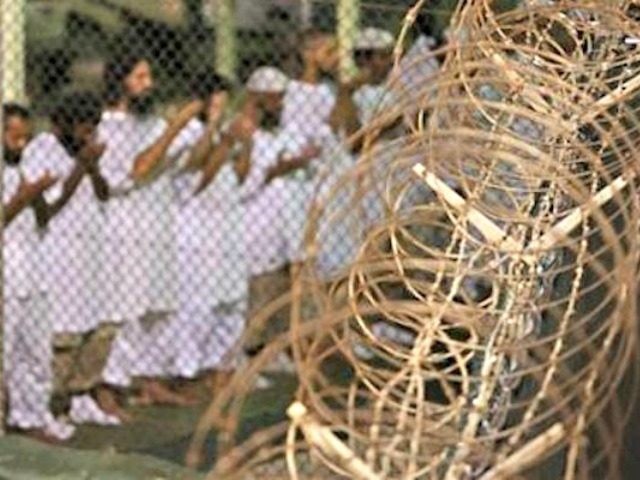An estimated 150 former Guantánamo Bay prisoners liberated as part of former President Barack Obama’s efforts to shut down the U.S. military detention center “risk being killed—or could end up becoming threats themselves,” the New York Times (NYT) acknowledged this week.
Obama reduced the number of detainees held at the facility, commonly known as Gitmo, from 242 to 41 when he took office.
The previous administration reportedly convinced about three dozen nations to take in 150 “lower-risk” prisoners from dangerous countries like Yemen and Libya.
Senegal, one of the countries who took in some of the prisoners, already deported two of them back to “their chaotic birth country of Libya,” where they “vanished” once they “fell into the hands of a hard-line militia leader who has been accused of prisoner abuse,” the Times reveals.
According to the United Nations, hundreds of African migrants are being bought and auctioned off at “slave markets” in Libya.
The move by Senegal has prompted fears that other countries who took in Gitmo detainees may also begin repatriating them back to their dangerous home countries where they may return to jihadi activities.
NYT attempts to blame what it described as the “collapse” of the Gitmo prisoner resettlement system employed by the Obama and Bush administrations on U.S. President Donald Trump, who has refused to free any detainees, reporting:
[A] decision this month by Senegal to deport two former detainees to their chaotic birth country of Libya has raised the prospect that the resettlement system is starting to collapse under President Trump.
…
The case sets a worrisome precedent, current and former officials said. The danger, they say, is that other countries may follow Senegal in forcibly moving more of the nearly 150 Obama-era resettled former detainees home to unstable places where they risk being killed—or could end up becoming threats themselves.
…
The breakdown of the Senegal resettlement also appears to be at least partly a consequence of the disorganization that has afflicted the State Department since Mr. Trump took office. The Obama administration set up a high-level, centralized office charged with monitoring former detainees indefinitely and dealing with any problems. But Rex W. Tillerson, Mr. Trump’s first secretary of state, shuttered it, so that function was added to the long list of things individual embassies are supposed to track.
Former President George W. Bush liberated even more prisoners (532) than his successor.
Gitmo still holds 41 detainees, including many Yemenis, and 26 who have been deemed “forever prisoners,” or too dangerous to release.
The Trump administration has indicated that it will make decisions on whether to release Gitmo detainees “on a case-by-case basis,” but has yet to liberate any.
Nearly three out of every ten released Gitmo detainees are suspected or confirmed of having re-engaged in terrorist activities, the Office of the Director of National Intelligence (ODNI) reports.
In his quest to shut down Gitmo, Obama met bipartisan opposition in Congress, particularly to a primary tenet of the Democratic president’s proposal to close the military detention center—transferring captives onto U.S. soil.
Obama himself signed the legislation into law that prohibits the United States government from transferring prisoners to the United States.

COMMENTS
Please let us know if you're having issues with commenting.